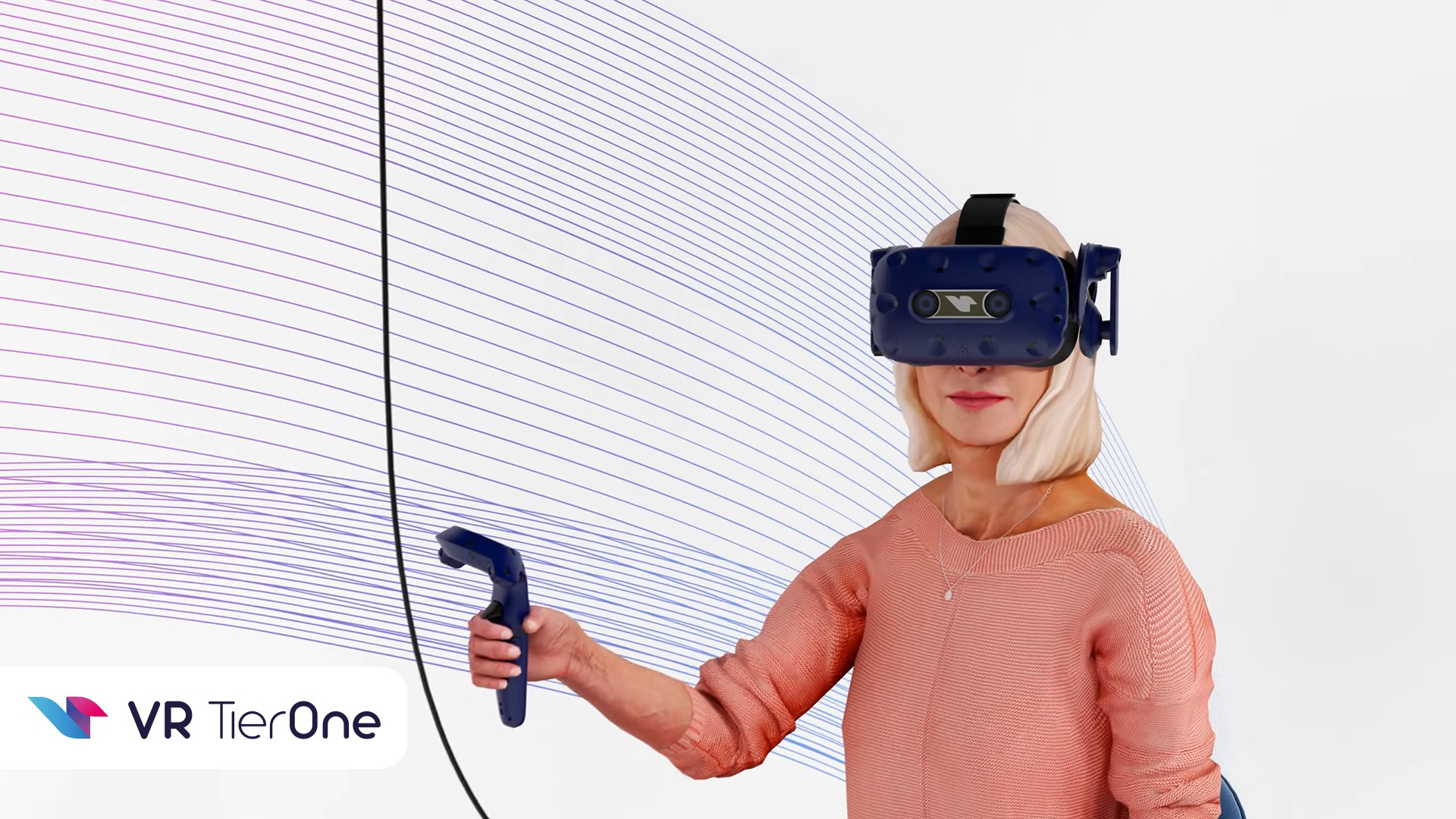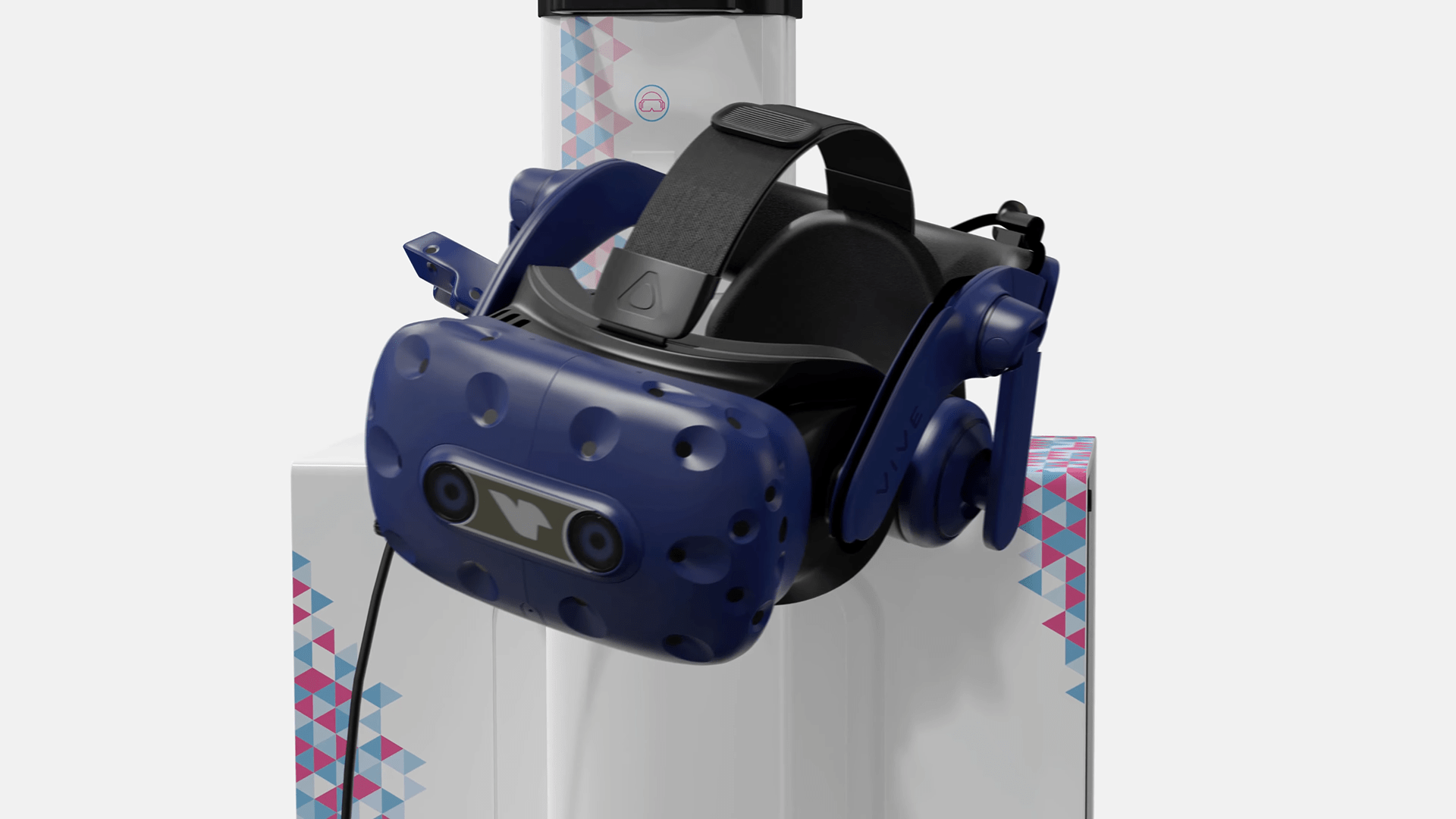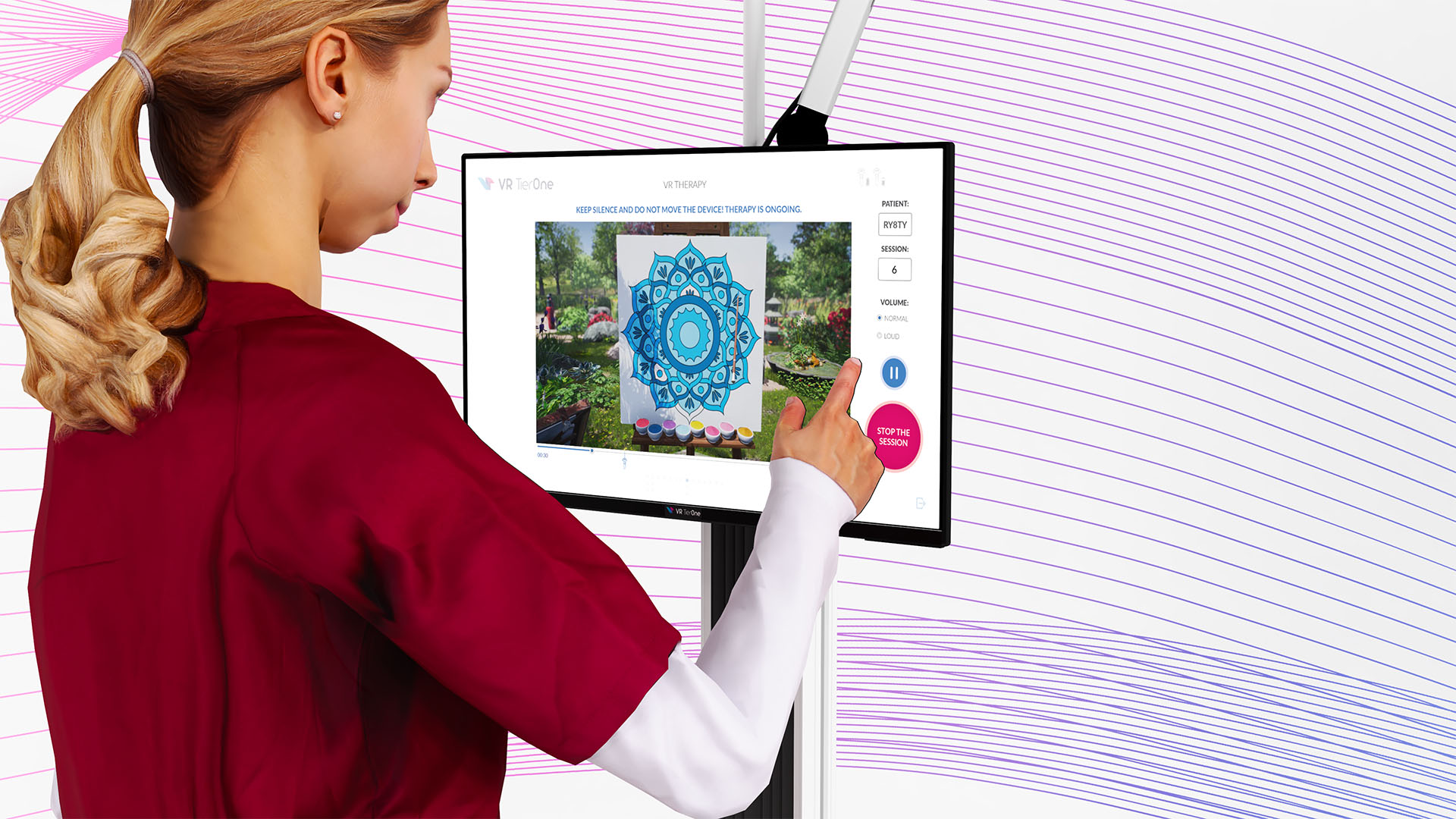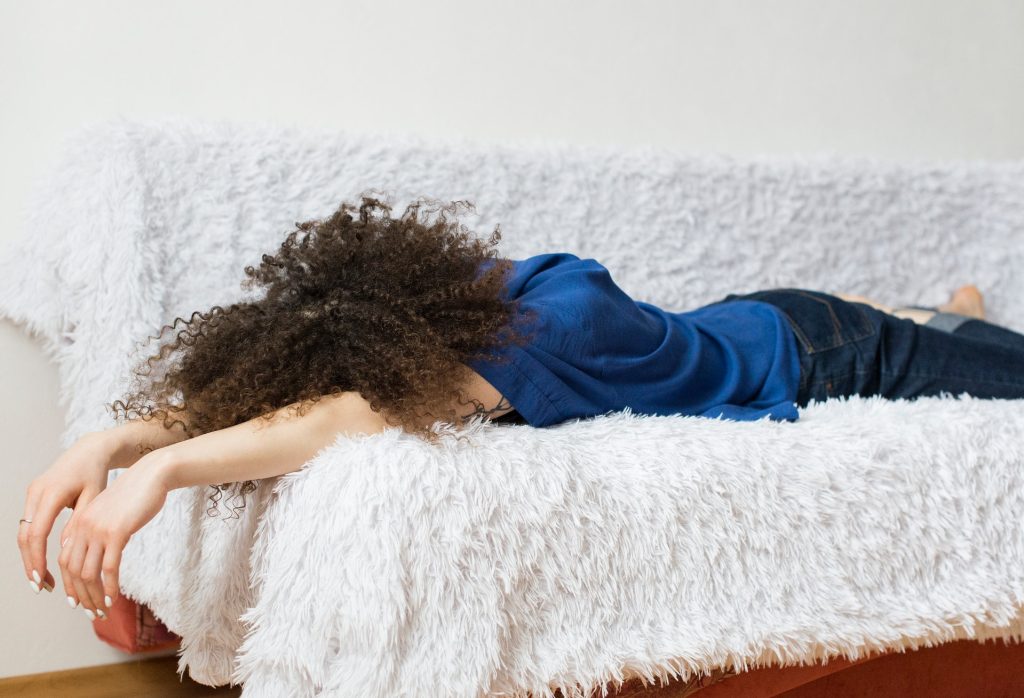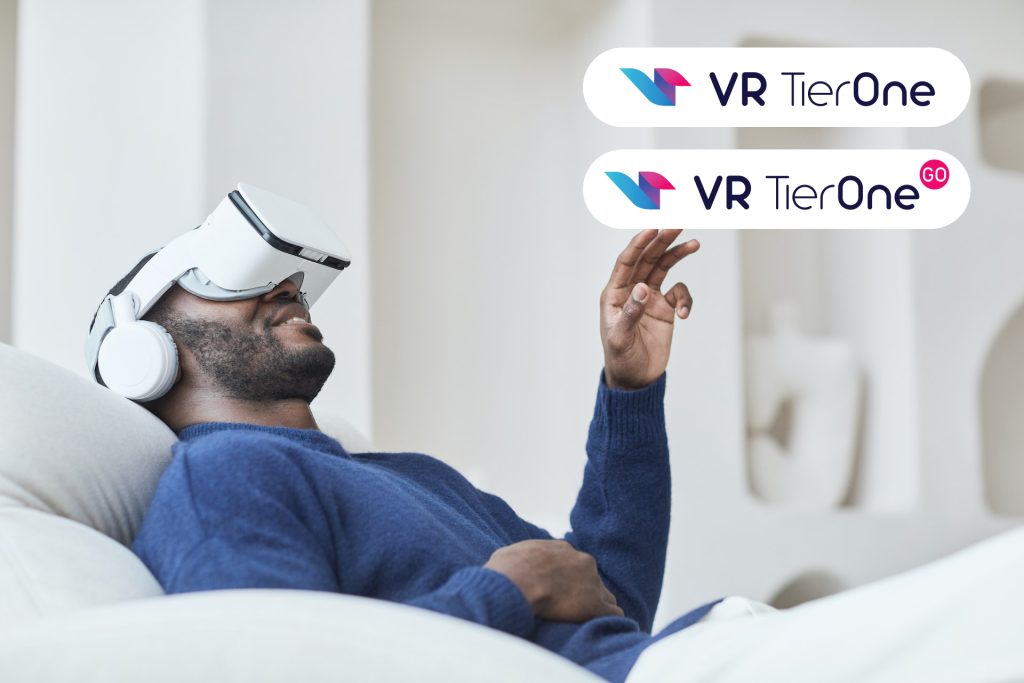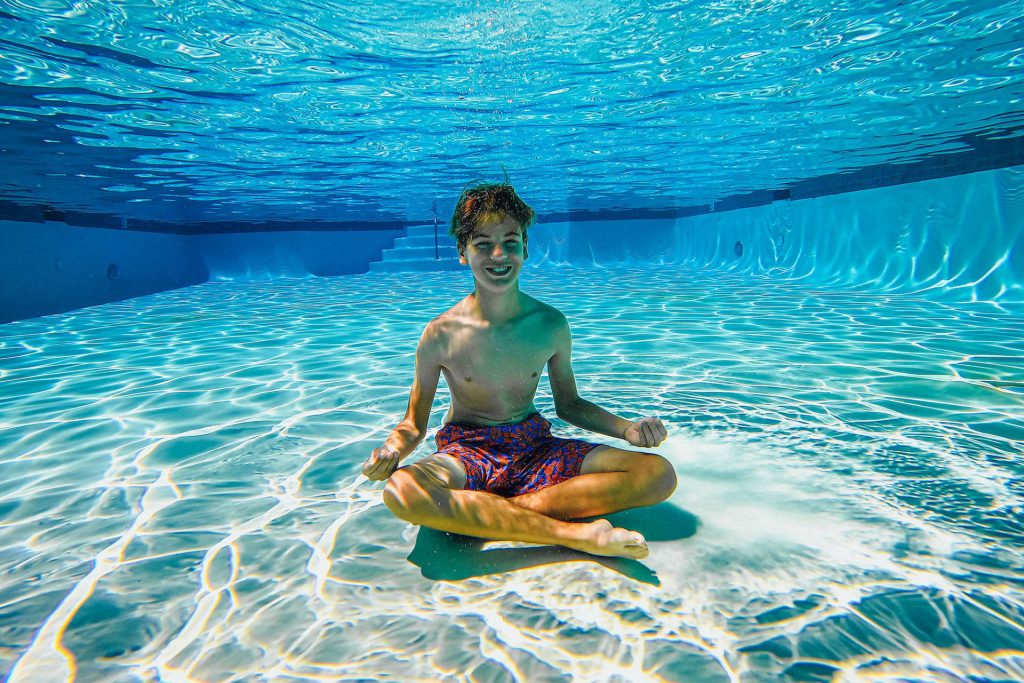The VR TierOne device was created as a solution for people struggling with depression, anxiety and stress disorders. It is a therapeutic tool that applies immersive Virtual Reality to improve the patient’s mental condition. Virtual therapy is dedicated especially to patients whose depression, anxiety and stress take away their motivation for rehabilitation, and thus slow down the convalescence processes. Our technological solution based on VR and Ericksonian psychotherapy offers an innovative combination that proved effective in the rehabilitation of people with depression, as well as stroke, heart attack and COVID-19 patients. The VR TierOne device is also a therapeutic aid for medical personnel: doctors, physiotherapists, psychologists, therapists and all those who are involved in the process of recovering the patient’s health.
VR TierOne in the eyes of the patient
Special VR glasses are used in the virtual VR TierOne therapy.
I am 55 years old and I had a stroke. I must admit that, before that stroke, I neglected my health, and all that mattered to me was my work. I disregarded my excessive blood pressure and overweight, I think the stroke was a consequence of that. There were also the cigarettes that I used in attempt to control my stress. After the stroke, many people tried to get me back on track, but I can only appreciate it now. At that time, right after my stroke, I was not fully aware of my health condition. My world turned gray, I felt tired, apathetic, angry, I experienced fear and fits of crying. I didn’t want to exercise. My reluctance to cooperate made the rehabilitation really hard. I believed that all that, the treatments, exercises, all these efforts had no sense. I was diagnosed with post-stroke depression. Hospitalization depressed me, causing a lot of stress. That was until I was offered the VR TierOne therapy. It was explained to me that this is an innovative form of mental support carried out in Virtual Reality. I would probably not go to a psychotherapist voluntarily, as it would be too embarrassing for me. Even though I really needed it. The virtual experience initiated my transformation. Before the first VR TierOne session, the medical staff explained to me what to expect. I was sitting comfortably in the chair in front of the device, after that special VR glasses were put one and after a while I found myself in a beautiful virtual environment, completely different from the hospital world. Everything felt real and at your fingertips. As recommended by the staff prior to the start, I followed the soothing voice of the virtual therapist. I was colouring mandalas in the virtual world and it was amazing! The virtual therapist believed strongly in me. His words supported me. When I was colouring with my stroke-weakened hand, the virtual therapist was assisting me, so I could easily complete the tasks. I had no idea that VR technology could help you rehabilitate after a stroke. Many people used VR TierOne, but I felt that the virtual Garden of Rebirth belongs only to me. It was my safe place in the hospital. The daily 20-minute session became the time when the entire outside world ceased to exist. I felt that I was immersed in a virtual garden and everything was going unhurriedly, as if outside time and real space. Surrounded by a virtual landscape and unforgettable sound, I understood that I want and can take care of my health, just like I take care of a virtual garden. Session after session my mood improved, I put my mind on the ease and felt that I could make a difference. After the two-week therapeutic cycle, I became motivated to exercise and strive for my own health. I really started to care to regain my independence. After returning home, I did not want to be physically dependent on my husband. After each session, I became motivated and willing to exercise my weak upper limb. Before, I didn’t like to exercise and gave up quickly. The physiotherapist was happy to notice that I started getting involved in rehabilitation. My effort enabled me to gradually regain my fitness. Today I am in much better physical and mental condition. Surprisingly, I even look better. I pay attention to what I eat and I have lost weight. I remember VR therapy as a pleasant experience that will stay with me forever. I follow my doctor’s instructions and take all the prescriptions. I quit smoking and found another way to deal with my stress. Colouring the VR TierOne therapeutic colouring book brings me peace, reminding me of my virtual therapy experience. I was extremely lucky to be admitted to a modern hospital with an innovative technology for treating depression. I am glad that the virtual VR TierOne therapy was among the treatments that I was offered, and that it helped me recover. Now I understand how important it is to support the psyche and I look at using psychological assistance differently. It’s good when someone believes in us strongly and gives support. The sessions were virtual, but their effects are real. In TierOne VR therapy, I found my life-giving force and discovered a way to achieve mental equilibrium.
Alice, 55
The advantages of VR TierOne for patients:
- non-pharmacological therapy without side effects,
- relieves depression, anxiety and stress disorders,
- activates participation in the treatment process,
- improves mood and motivation,
- supports cognitive functions,
- renders the rehabilitation more attractive,
- helps to achieve a state of psychophysical relaxation,
- stops the racing of thoughts and allowing to focus,
- leaves pleasant memories from the hospital,
- effectiveness confirmed by tests,
- shortens recovery time.
VR TierOne in the eyes of the medical staff
The therapy is facilitated by the graphic interface of the VR TierOne device.
I am a physiotherapist and I have been working in the profession for 12 years. Helping other people in need is burdensome and sometimes makes me require support myself. Insufficient staffing and the large number of patients in our facility causes mental and physical overload. The number of people suffering from diseases of affluence increases every year, I myself see an increase in cases of stroke and depression. The outlook for the future is not optimistic in this regard and there is already a shortage of staff in the labour market. The head of the hospital experiences trouble finding employees and strengthening our hospital staff. They call us medics heroes for a reason. Ensuring and restoring health is a big responsibility and it often requires a lot of effort. Taking care of the health of others, I cannot lose mine, and sometimes I feel really tired. Exhaustion of our strength is often associated with the patient’s lack of motivation, refusal to cooperate in the implementation of the treatment and rehabilitation plan. Establishing relationships and carrying out any improvement activities with a patient in a difficult health condition may prove problematic. It is especially difficult with stroke patients, when time is important in recovery and when you need to make the best use of the therapeutic window for rehabilitation. The ability to exert impact on the patients’ attitude and making them actively participate in the treatment process is often beyond the scope of time, and I must admit that it also falls outside the scope of my competence. When mental disorders such as depression, anxiety or stress inhibit the patient’s journey towards health, and the required intervention of a mental health specialist is unavailable at the moment, VR TierOne is here to help. This is a new device in our hospital that improves my work. It allows me to take care of a greater number patients. Supporting ourselves with new technologies is the only and seemingly inevitable way to deal with the shortage of medical staff. The VR TierOne medical solution wa designed so that the psychological support of the patient can be provided at any place, at any time and by any health care professional. It only requires a short training session. The device is really easy to use, and I can prepare my patients for therapy in a short time. The computer of the VR TierOne device performs the work with the same accuracy every time and does not get tired, regardless of the number of patients and the number of sessions. It was enough for the patient to put on Virtual Reality glasses and start the virtual therapy using the device’s touch desktop. Each therapy session lasts about 20 minutes, during this time I can see what my patient is doing in the virtual world. He is not alone there, he is led by the virtual therapist. This is a unique solution, but most importantly, an effective one! I am interested in new medical solutions and learn about them. I found out that VR TierOne reduces depression by 37%, stress by 28%, anxiety by 37%, and it’s all backed by scientific evidence. The therapeutic effects are brought by a metaphorical message, immersive Virtual Reality and therapeutic music. I read about the therapy in the “VR TierOne Clinical Guide” delivered with the device, so I know that nothing is left to chance in this therapy. After the end of the therapeutic cycle, which lasts two weeks, my patients are not only more willing to talk, but most importantly more willing to rehabilitate. I already had a stroke patient diagnosed with depression, I knew it was very hard to motivate her to exercise. During the VR TierOne session, I observed that the program adjusted the difficulty level by itself and the patient managed to proceed with the virtual therapy. She became enthusiastic about exercising with me, and for me it is proof that VR therapy works. I don’t usually make my happiness dependent on others, but I admit that better patient well-being translates into my better mood, and results in our working together towards better health. I read reports about Virtual Reality and its applications in medicine, but I am still impressed with the technology. It’s good to work in a facility with modern equipment, I feel that VR TierOne helps not only patients, but also relieves me in my daily work.
Yvonne, 37
The advantages of VR TierOne for medical personnel:
- a modern therapeutic tool,
- relieves unfavourable mental conditions of the patient,
- the therapy affects the patient’s motivation and commitment
- quick patient preparation for therapy,
- convenience in working with people with physical disabilities,
- ensuring friendly conditions for therapy,
- operation does not require physical effort,
- ease of starting the session,
- convenient interface,
- sessions can be followed on the screen,
- increased patient satisfaction,
- increased effectiveness of rehabilitation,
- shortening the time of patient care.




